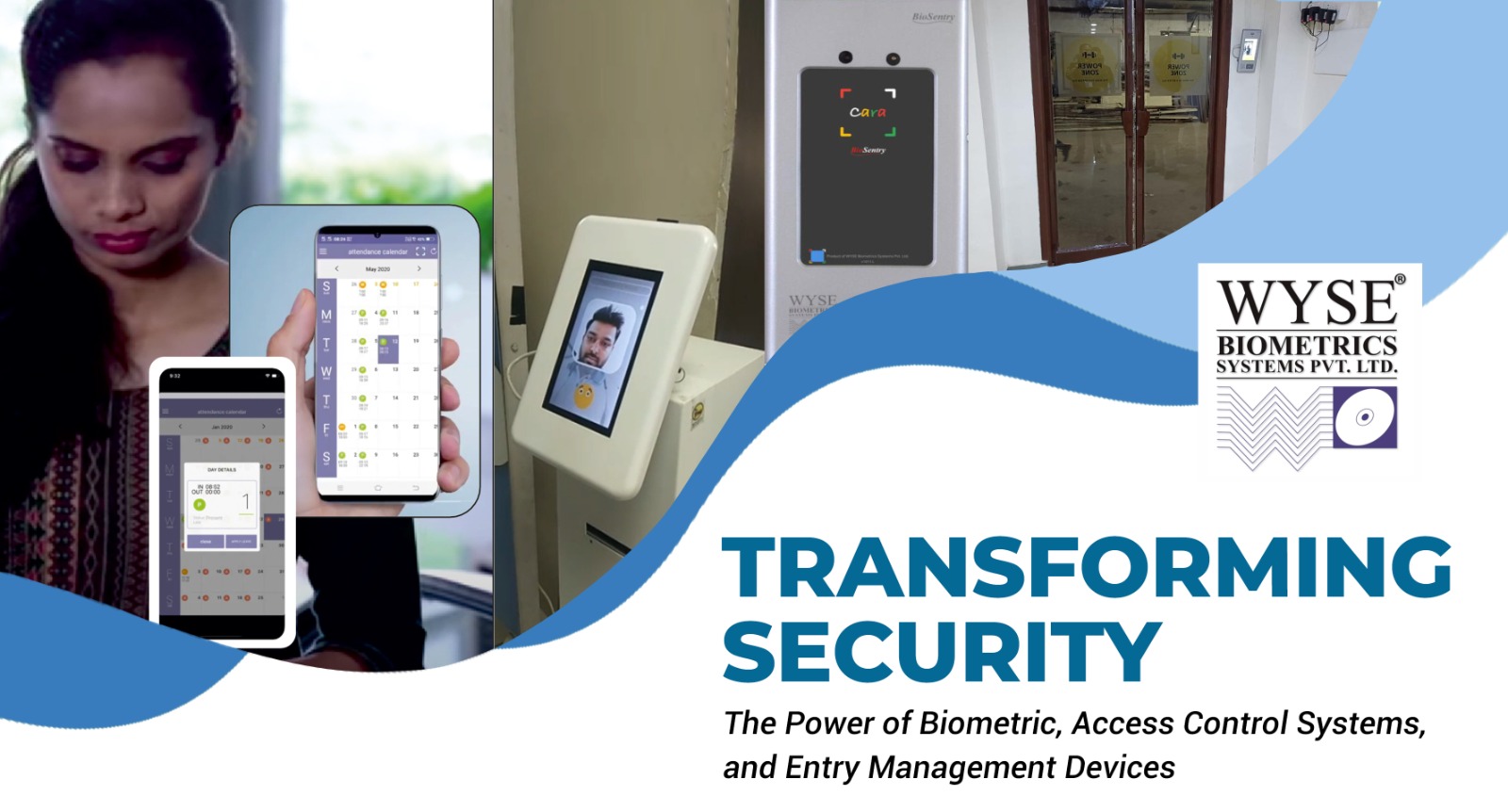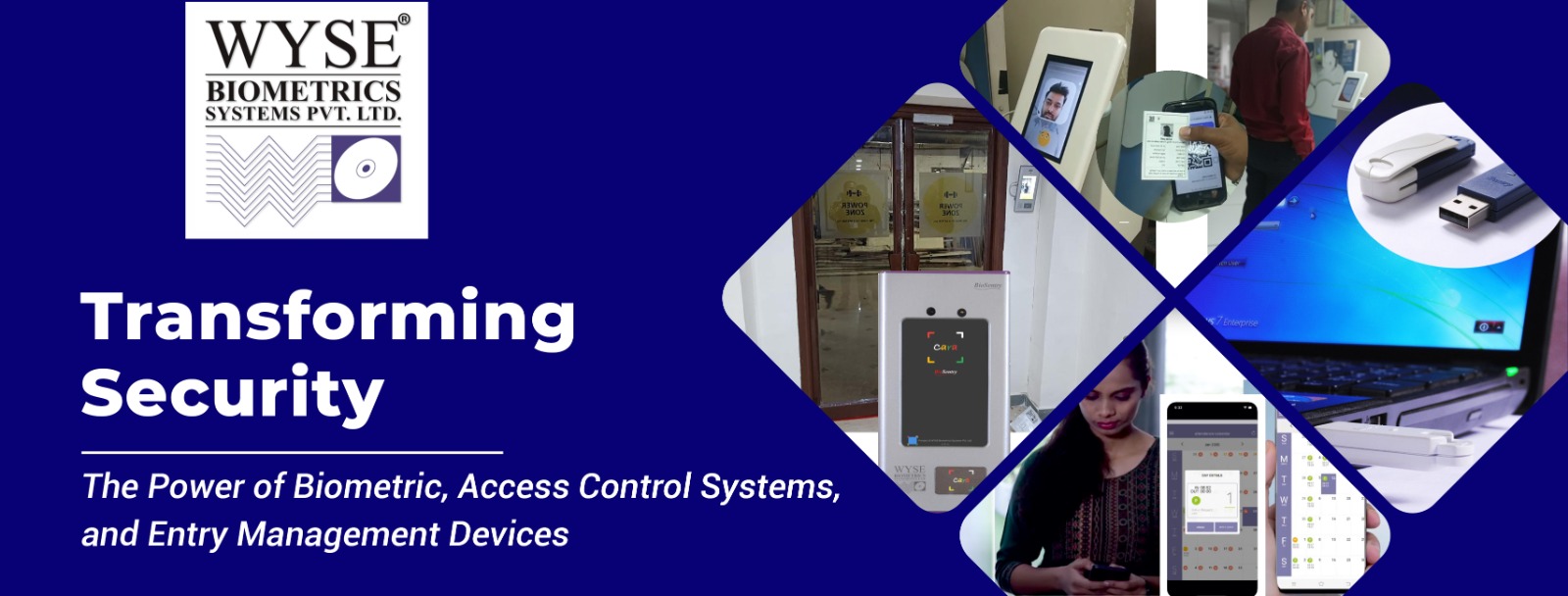The Evolution of Biometrics, Access Control Systems, and Entry Management Devices:

Enhancing Security and Efficiency in an increasingly digital world, the need for robust security measures has become paramount. Biometrics, access control systems, and entry management devices have emerged as groundbreaking technologies that enhance security and streamline access management processes. This blog explores the evolution and significance of these technologies, their key components, and the benefits they offer in various sectors. From fingerprint recognition to facial recognition and beyond, biometrics have revolutionized access control systems, providing accurate and efficient solutions for organizations worldwide.
Biometrics: The Key to Personal Identification Biometrics refers to the measurement and analysis of unique physical or behavioral characteristics that can be used to verify and authenticate individuals. Unlike traditional identification methods such as passwords or access cards, biometrics offers a more reliable and secure approach.
Fingerprint recognition, one of the earliest biometric technologies, identifies individuals based on the unique patterns and ridges on their fingertips. As technology advanced, other biometric modalities emerged, including iris recognition, facial recognition, voice recognition, and even gait analysis. Each of these modalities has its own set of advantages and applications.
Biometrics finds applications in diverse sectors such as law enforcement, healthcare, finance, and transportation. It enables law enforcement agencies to accurately identify criminals, hospitals to secure patient records, financial institutions to protect against fraud, and airports to expedite passenger processing.
Access Control Systems: Safeguarding Premises and Information Access control systems are an integral part of modern security infrastructure, allowing authorized personnel to gain entry to restricted areas while keeping unauthorized individuals at bay. These systems combine various components to ensure secure access management.

Key components of access control systems include:
• Identification devices: These devices capture biometric data or require the use of access cards or key fobs for user identification.
• Control panels: These centralized units process the input from identification devices and determine access permissions.
• Locking mechanisms: These devices, such as electronic locks or turnstiles, physically control entry and exit points.
• Management software: This software enables administrators to configure access rules, monitor access events, and generate reports.
Access control systems offer several benefits, including enhanced security, improved operational efficiency, and detailed access logs. By integrating biometric data, these systems provide a higher level of accuracy and prevent identity theft or unauthorized access. Moreover, they allow for real-time monitoring and remote access management, making them ideal for organizations with multiple locations.
Entry Management Devices: Simplifying Access Processes - Entry management devices play a crucial role in managing the flow of people and vehicles at various entry points. These devices range from simple turnstiles to sophisticated security gates equipped with biometric scanners.
Turnstiles are commonly used in public transportation systems, stadiums, and office buildings. They allow for controlled entry by validating tickets or access cards and preventing tailgating or unauthorized entry. Similarly, security gates equipped with biometric scanners add an extra layer of security by authenticating individuals through their biometric traits, ensuring only authorized personnel can gain entry.
The integration of entry management devices with access control systems and biometric technology enables seamless access management. By automating the entry process, organizations can reduce human errors, enhance efficiency, and improve overall security.
Biometrics, access control systems, and entry management devices have revolutionized the way we secure our premises and manage access. By leveraging unique physical or behavioral traits, biometrics offer reliable identification methods, ensuring only authorized individuals gain entry. Access control systems provide a comprehensive approach to managing access permissions, combining identification devices, control panels, locking mechanisms, and management software. Entry management devices further simplify access processes, streamlining the flow of people.